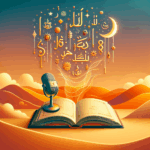The Arabic Alphabet: A Gateway to Understanding Middle Eastern Cultures 🌍
The Arabic alphabet is more than just a script; it’s a bridge to the rich and diverse cultures of the Middle East. Whether you’re a curious traveler, a language enthusiast, or someone intrigued by global cultures, understanding the Arabic alphabet can open doors to a deeper appreciation of the region’s history, art, and traditions. Join me on this journey as we explore the wonders of the Arabic script! 🎨📖
Table of Contents
1. Introduction to the Arabic Alphabet
2. Historical Significance of the Arabic Script
3. Arabic Calligraphy: An Artistic Expression
4. Cultural Insights Through Language
5. Conclusion: Embracing the Arabic Alphabet
6. FAQs About the Arabic Alphabet
Introduction to the Arabic Alphabet
The Arabic alphabet consists of 28 letters and is written from right to left. It might seem daunting at first, but it’s fascinating how each letter connects to form words, much like a puzzle. This script is used not only in the Arabic language but also in other languages like Persian, Urdu, and Pashto, highlighting its widespread influence. 🌐
Historical Significance of the Arabic Script 📜
Dating back to the 4th century, the Arabic script has a rich history intertwined with the Islamic Golden Age. It was during this period that scholars made significant advancements in science, mathematics, and philosophy, recording their findings in Arabic. This script was a conduit for knowledge, helping to shape the world we know today. Understanding its evolution provides insights into the historical exchanges between cultures and the spread of knowledge. 🏛️
Arabic Calligraphy: An Artistic Expression ✒️
Arabic calligraphy is more than just beautiful writing; it’s an art form that conveys cultural and spiritual beliefs. From the intricate designs on mosque walls to the delicate scripts on artwork, calligraphy is a testament to the aesthetic appreciation of the written word in Middle Eastern cultures. Learning about different styles, such as Naskh and Kufic, can offer a deeper connection to the region’s artistic heritage. 🎨
Cultural Insights Through Language 🗣️
Language is a key to understanding culture, and the Arabic alphabet is no exception. By learning even a few basic words and phrases, you can gain insights into social norms, traditions, and values. For instance, the phrase „Inshallah“ (God willing) reflects a cultural emphasis on humility and faith in divine will. Engaging with the language can enhance your travel experiences and foster meaningful connections. 🌟
Conclusion: Embracing the Arabic Alphabet
Embracing the Arabic alphabet is a journey into the heart of Middle Eastern culture. It’s an opportunity to appreciate the beauty and complexity of a script that has connected people across time and space. Whether through language learning, calligraphy, or historical exploration, the Arabic alphabet invites us to see the world through a different lens. So why not dive in and discover what this ancient script has to offer? 🌏✨
FAQs About the Arabic Alphabet
Q1: Is the Arabic alphabet difficult to learn?
A1: While it may seem challenging at first, with practice and exposure, many find the Arabic alphabet to be quite logical and beautiful. Starting with basics and gradually building up can make the learning process enjoyable.
Q2: How is Arabic calligraphy different from regular writing?
A2: Arabic calligraphy transforms the script into an art form, focusing on aesthetics and design. It often involves specific styles and techniques to create visually stunning works.
Q3: Can learning the Arabic alphabet help in understanding other languages?
A3: Absolutely! The Arabic script is used in several other languages, so learning it can provide a foundation for exploring languages like Persian, Urdu, and others.
Q4: What resources are available for beginners learning the Arabic alphabet?
A4: There are numerous online courses, apps, and books designed for beginners. Engaging with native speakers and joining language learning communities can also be very helpful.
Q5: Why is the Arabic script written from right to left?
A5: The Arabic script evolved in this direction due to historical writing practices. It aligns with the natural flow of the language and has been preserved through tradition.
Embark on your journey today and let the Arabic alphabet be your guide to a world of cultural discovery! 🚀






